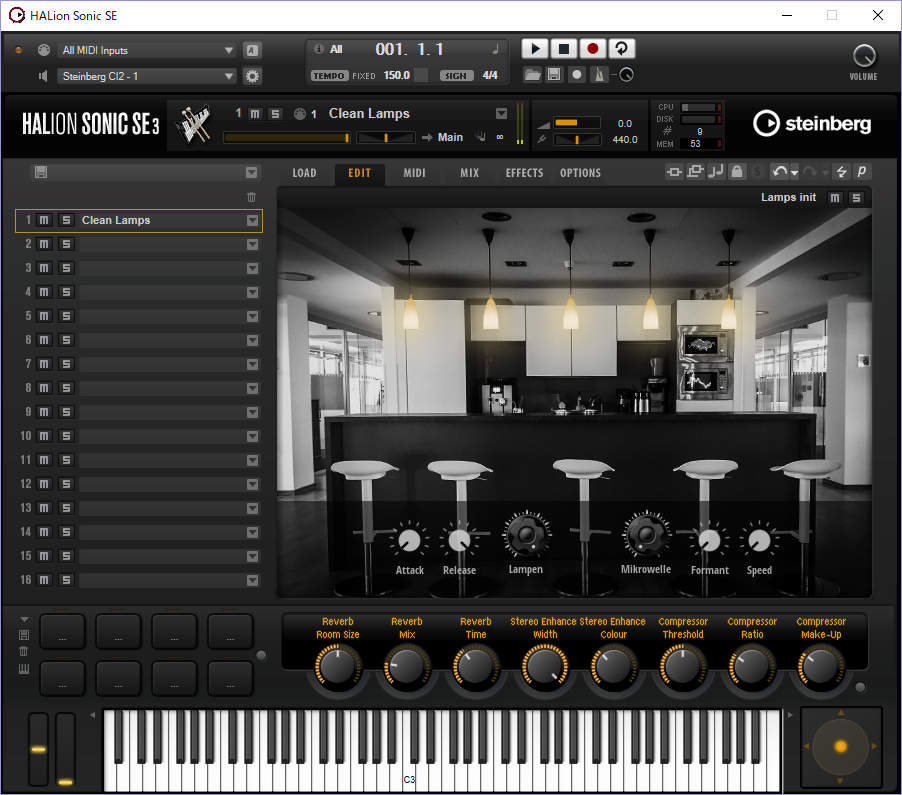

- HALION LIBRARIES MANUAL
- HALION LIBRARIES FULL
- HALION LIBRARIES SOFTWARE
- HALION LIBRARIES PROFESSIONAL
- HALION LIBRARIES MAC
The Channel/Program page affords the first glimpse of HALion's distinctive Navigation Controller, an illuminated virtual trackball which can be used to scroll up and down or left and right, or to zoom in and out (depending upon the page and the parameter). You can also select to which of HALion's 12 virtual audio outputs (four stereo pairs, four mono) each Program will be routed. Along the bottom of the Macro window are six buttons, one for each of HALion's six edit pages (these buttons and the keyboard appear on every other page of HALion, but have been omitted from most screen grabs in this article to avoid repetition).Ĭlicking on the 'Chan/Prog' button opens HALion's Channel/Program page (see overleaf), where you choose which of a possible maximum of 128 Programs will be assigned to each of the 16 MIDI channels. There's also the familiar virtual keyboard for auditioning sounds. Twelve knobs and eight sliders allow for simple 'hands‑on' alterations of tuning, filter and LFO settings and amp and filter envelopes, amongst other parameters.

The Macro page offers easy access to HALion's most basic Program‑editing controls. The vertical lines mark the range of the Program across the keyboard at the bottom, while the sample column height shows the velocity range over which the sample extends - you can see the scale from 0 to 127 on the right. HALion's well‑designed Keyzone page allows the easy creation of multisamples. Clicking the Edit button on the VST instrument 'rack' brings up HALion's graphical user interface, which by default opens on the Macro page. Once installed, HALion can be selected from the VST instruments panel and assigned as a MIDI track output just like any other VST instrument.

HALION LIBRARIES MAC
Mac users need OS 9 on at least a 250MHz 604e with 128Mb of RAM, though a G3 or better is recommended.īefore getting started, it's advisable to make sure you're running the very latest version of Cubase (updaters are supplied on the HALion CD), or you may find you have problems accessing a few of the plug‑in's features.
HALION LIBRARIES MANUAL
The manual states that the minimum system requirements for the PC version are a 266MHz Pentium processor with 128Mb of RAM, although a 400MHz Pentium is recommended. In other words, there's plenty to get you started.
HALION LIBRARIES FULL
Also supplied are four 'Content' CDs full of high‑quality Programs and samples supplied by Wizoo and E‑Lab, together with three demo CDs from other manufacturers. HALion is delivered on a cross‑platform CD containing both Windows and Mac versions of the plug‑in. The glowing blue Navigation Controller can be seen on the right, and is available from every window except the Macro page. HALion is different: it boasts a features list to match even the most luxurious of rackmount samplers, and is perhaps the first VST plug‑in to offer a real, workable alternative to owning a hardware sampler. Native Instruments' Battery is an impressive sample‑playback plug‑in which beat HALion on to the market by several months, but was primarily designed for use with single‑hit percussion sounds, and is not really suitable for pitched, layered multisamples.
HALION LIBRARIES PROFESSIONAL
However, HALion is the first really convincing professional sampler built specifically for Cubase VST.
HALION LIBRARIES SOFTWARE
Of course, software samplers are not a wholly new idea: several developers have already produced some creditable examples, perhaps most notably Nemesys with Gigasampler and Emagic with EXS24 (the latter offering seamless integration with Logic Audio).

If you're interested in how it runs under the competition, look at Mark Wherry's box on using it with Emagic's Logic Audio, which you'll find elsewhere in this review. However, as you might expect from a piece of Steinberg software, HALion was clearly designed for closest integration with Cubase, so that's what I used throughout this review. More specifically, it's a software sampler implemented in the form of a VST plug‑in, and therefore useable with Steinberg's ubiquitous Cubase VST MIDI + Audio sequencer, as well as compatible third‑party applications. Paul Sellars investigates Steinberg's HALion, which offers close integration with Cubase VST, but can also be used as a VST‑format plug‑in from other sequencers. Software samplers are not new, but until now they have only existed as stand‑alone applications or sequencer‑specific plug‑ins.


 0 kommentar(er)
0 kommentar(er)
